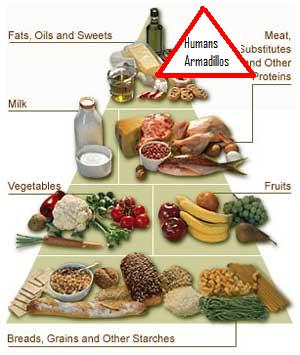Mycobacterium leprae
Nutrition
Bacteria are mainly divided into two
general categories. Some are photosynthetic (autotrophic)
bacteria, which mean they are self-feeding and use
photosynthesis to produce food. Most, however, are
heterotrophic bacteria.
Mycobacterium leprae are heterotrophic
bacteria, or “other feeding,” and they rely on other sources for
food. In
the case of Mycobacterium leprae,
they are parasitic and rely on their host, (a human or armadillo
are the only known organisms capable of hosting them,) for their
nutrients. Unlike a symbiotic relationship, the parasites are
harming the host in some way while they are gaining nutrients.
The human or armadillo, in this case, are not benefitting, but
actually being damaged. 
Mycobacterium leprae would stick to the "humans and armadillo" category....
Because Mycobcaterium leprae do not have mouths, they must possess special membranes on their cell walls which allow nutrients to diffuse through. Remember they do not have membrane-bound organelles, but they do have special components to aid. They then metabolize sugars that they consume from the host, which is turned into polysaccharides. These polysaccharides are then stored until they are needed.